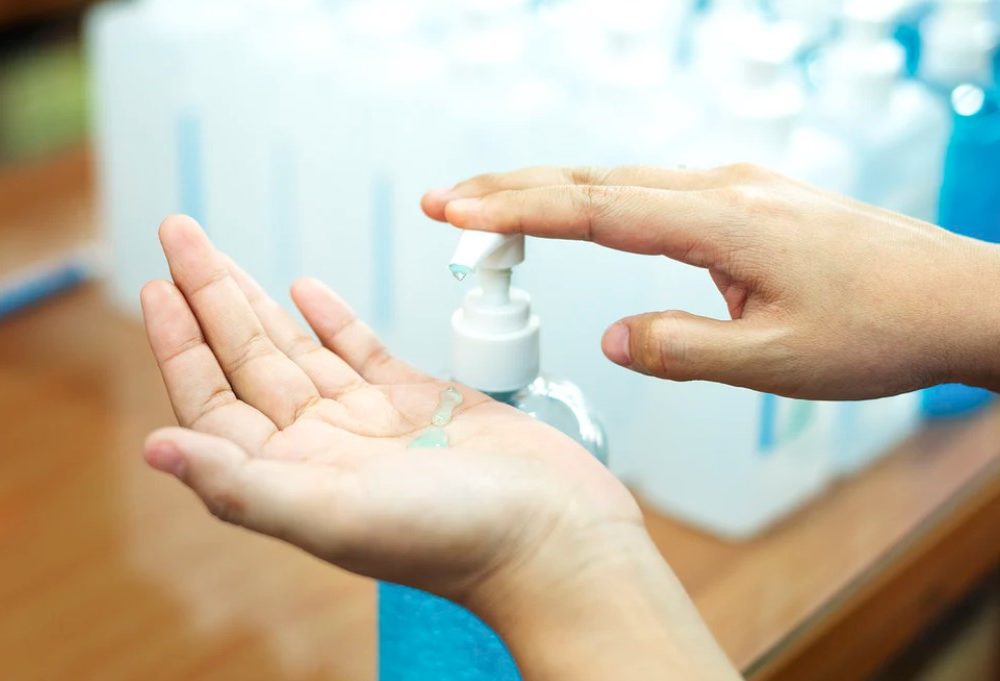Contact customer service

You are:
Antibiotic resistance, epidemics, nosocomial diseases… Faced with these challenges, hygiene precautions intended to prevent healthcare-associated infections are more topical than ever. Their reinforcement during the Covid-19 epidemic has made us aware of their importance: by maintaining these new habits, their positive impact could be prolonged, benefitting the health of our patients… and our own.
Where healthcare is concerned, the spectacular therapeutic and technological progress that medicine has experienced in recent decades has pushed the issue of hygiene into the background. But the increase in antimicrobial resistance and the arrival of emerging viruses, of which the Covid-19 epidemic is a stark reminder, has brought this home: faced with an uncertain future, hygiene precautions remain essential to the health of patients, healthcare professionals and the general population1.

According to the World Health Organisation (WHO), each year healthcare-associated infections (HAI) affect hundreds of millions of patients worldwide2. It is estimated that in France, this amounts to 5% of hospitalised patients, which is 470,000 cases per year, 20 to 30% of which are preventable3. The bacteria that are most frequently linked to healthcare-associated infections are E. Coli, Staphylococcus aureus and Pseudomonas aeruginosa. As some are resistant to several antibiotics, treatment is very difficult4. Standard precautions are essential to prevent them: hand hygiene, personal protective equipment, respiratory hygiene, prevention of accidental exposure to blood and management of excreta, equipment, linen, waste and surfaces5. Excreta in particular is a major source of bacterial transmission, including those resistant to antibiotics6.
Since the start of the epidemic, standard precautions have been widely retransmitted to hospital staff, and some have been reinforced: disinfection of hands using hydroalcoholic gel before and after each contact with a patient or their environment, always wearing a surgical mask (FFP2 for procedures involving an aerosol), clothing changed each day, disinfection of equipment after each patient, eye protection, ventilation of premises, etc.7and8. More specific recommendations have also been sent to in-home professionals as well as those in nursing homes and in medico-welfare establishments9and10. Infection prevention in patients and all healthcare professionals has become a priority beyond the epidemic context11.


Hands have long been known as the most significant pathway for healthcare-associated infections. But today, the digital tools that caregivers use on a daily basis (smartphones, computer keyboard, tablets, buttons on electronic medical equipment) have increased the risk of transmission.
In 2020, the WHO renewed its recommendations on hand hygiene in the context of care during the Covid-19 pandemic12. It reminds us of the need to wash our hands at the right time (before touching the patient and before procedures, after exposure to fluids, contact with the patient and their environment) and using the right technique (with a hydroalcoholic gel for 20 to 30 seconds, with water and soap for 40 to 60 seconds).
According to several studies devoted to the knowledge and adherence of healthcare professionals to hand hygiene, these remain insufficient. However, by increasing their awareness of the importance of these good habits, the transmission of pathogens would be reduced by 30%. During the pandemic, hand hygiene precautions did not increase, presumably because healthcare workers wore gloves instead13and14. On the other hand, several studies have shown that the overall strengthening of hygiene measures required by the Covid-19 epidemic in 2020 has significantly reduced the number of healthcare-associated infections compared to the previous year15.
Finally, let’s not forget that the patient’s daily hygiene care, even if it seems basic or even secondary, is vital to maintaining the patient’s health. It removes germs present on the patient’s skin or mucous membranes and thus reduces the risk of infection16. Scientific measurements on their impact remain sparse, but recent studies show that oral hygiene helps prevent aspiration pneumonia or opportunistic infections, and that assisting with elimination can reduce the risk of intestinal infections by C. difficile17.
[1] Venier AG : Eviter les contamination lors des soins, Coll Avelines, Ed. Le Coudrier, 2021 ISBN : 978-2-919374-37-3
[2] Résumé des Recommandations de l’OMS pour l’Hygiène des Mains au cours des Soins, 2009
[3] HAS : Évaluation de la prévention des infections associées aux soins selon le référentiel de certification, octobre 2020
[4] ECN Pilly 2020, 6e édition, Maladies infectieuses et tropicales, ISBN 978-2-916641-69-0.
[5] Venier AG : Eviter les contamination lors des soins, Coll Avelines, Ed. Le Coudrier, 2021 ISBN : 978-2-919374-37-3
[6] Certification des établissements de santé – Fiche pédagogique – Infections associées aux soins – novembre 2020
[7] Société française d’Hygiène Hospitalière Note relative à la protection des patients et des professionnels en contexte COVID-19, 29 septembre 2021 https://www.sf2h.net/wp-content/uploads/2020/02/NOTE_SF2H_29sept21_precautions_pat_pers_contexte-covid.pdf
[8] https://solidarites-sante.gouv.fr/IMG/pdf/protocole-mesures-protection-etablissement-medico-sociaux-degradation-epidemie-covid.pdf
[9] https://www.has-sante.fr/upload/docs/application/pdf/2020-04/373_reponse_rapide_covid19_mk_15-04-20_v4_vmssr.pdf
[10] https://www.hauts-de-france.ars.sante.fr/system/files/2021-02/Entre%20soignants.pdf
[11] Bowdle A, Munoz-Price S. Preventing Infection of Patients and Healthcare Workers Should Be the New Normal in the Era of Novel Coronavirus Epidemics, Anesthesiology. 2020;132(6):1292-1295.
[12] WHO SAVE LIVES: Clean your hands in the context of Covid-19, 2020
[13] Raguza R et al. Has the COVID 19 Virus Changed Adherence to Hand Washing among Healthcare Workers? Behav Sci (2021) Apr;11(4) :53
[14] Huang F et al. COVID-19 outbreak and healthcare worker behavioural change toward hand hygiene practices.The Journal of hospital infection vol. 111 (2021): 27-34.
[15] Cerulli Irelli E, Morano A, Di Bonaventura C. Reduction in nosocomial infections during the COVID-19 era: a lesson to be learned. Updates Surg. 2021;73(2):785-786.
[16] Inan NK, Dinç L. Evaluation of nursing documentation on patient hygienic care, International Journal of Nursing Practice 2013; 19: 81–87
[17] Goldenhart AL, Nagy H.Assisting Patients With Personal Hygiene, 2021, StatPearls Publishing LLC